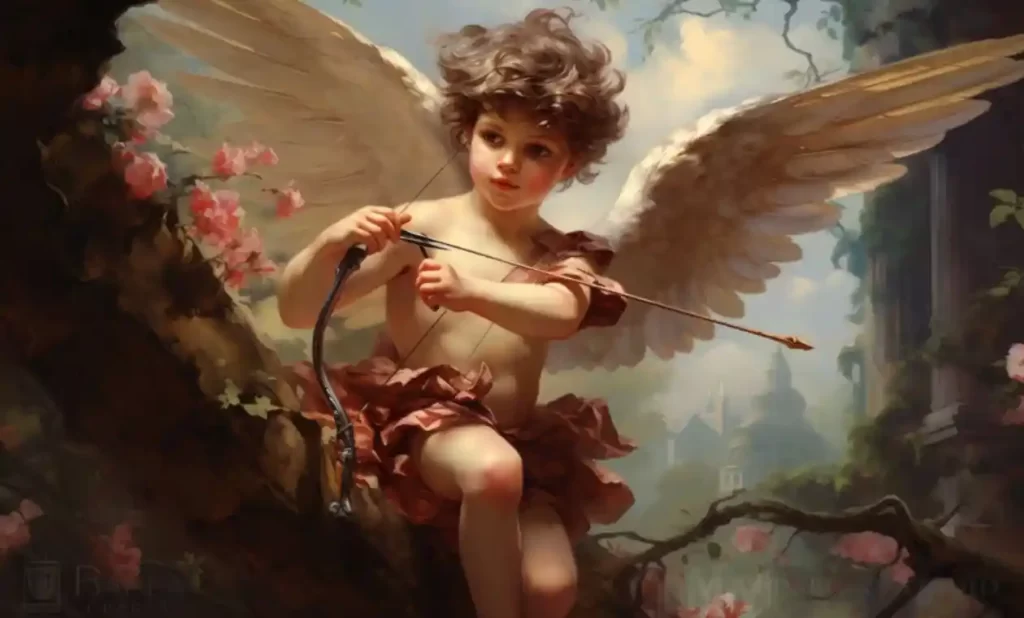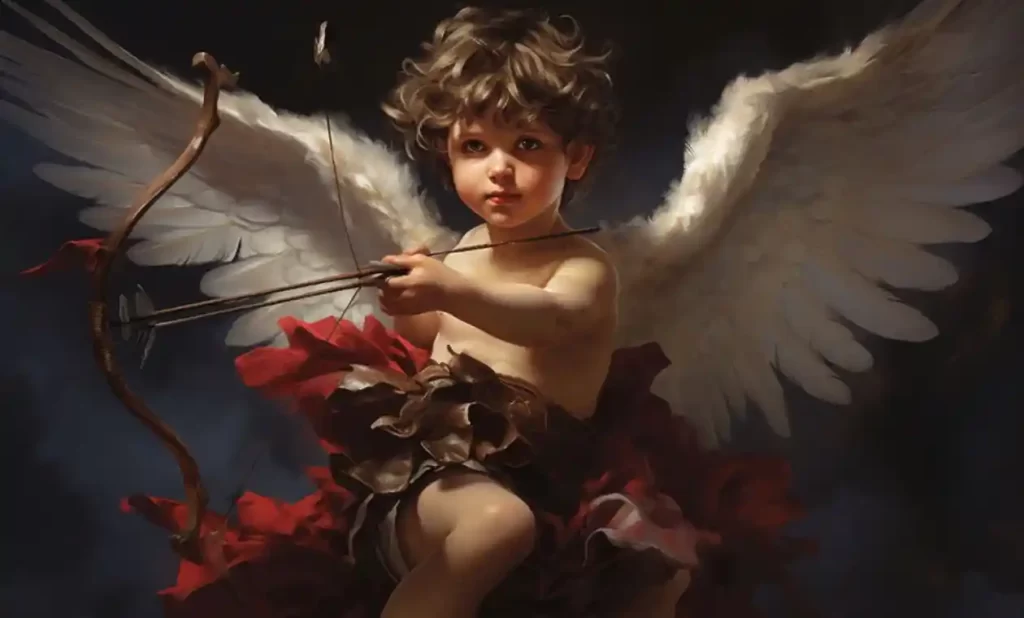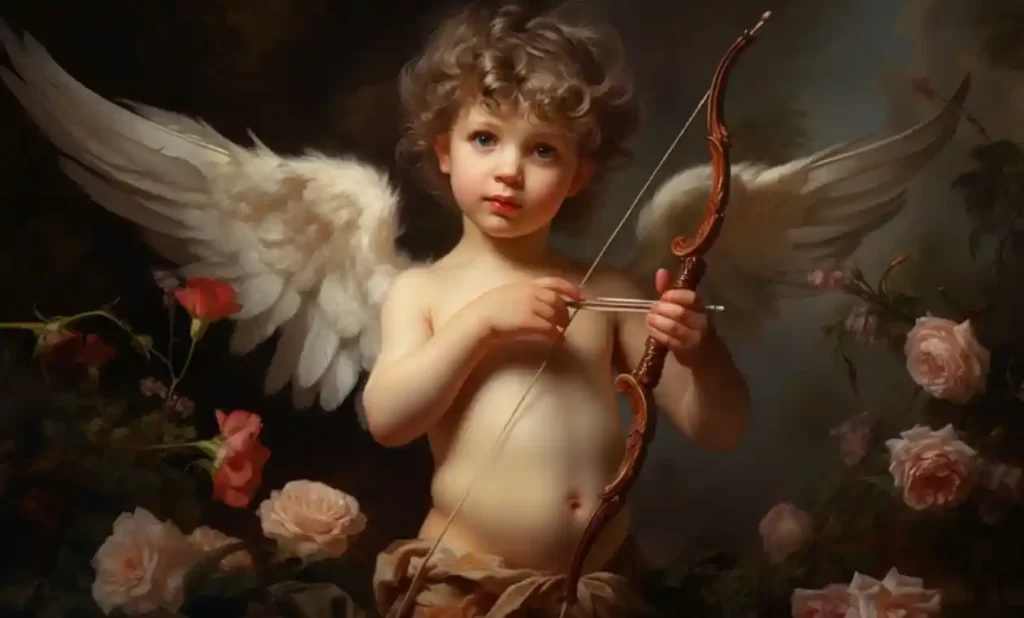
In the heart of Roman mythology, there exists a charming and enchanting figure known as Cupid. This mischievous yet endearing deity holds the strings of desire, affection, and love, weaving them into the fabric of both ancient tales and present-day celebrations. With his playful demeanor and captivating arrows, Cupid has left an indelible mark on the world of mythology and continues to cast his spell on modern culture. Join me as we delve into the fascinating realm of Cupid, the Roman god who wields the power of love itself.
The Birth of Cupid:
In the realm of divine origins, Cupid’s birth story is as captivating as the emotions he stirs. Born from the enchanting union of Venus, the goddess of love and beauty, and Mars, the formidable god of war, Cupid emerged as a bridge between two seemingly contrasting domains. With Venus as his mother, his very essence was infused with the essence of love, while the presence of Mars as his father hinted at the possibility of passion taking on various forms – from tender affection to fierce desire.
This unique parentage bestowed upon Cupid an intricate blend of qualities that would come to define his enigmatic character. With Venus’ grace and Mars’ vigor intertwined within him, Cupid embodied a harmonious duality that would later influence his role as the bringer of love’s transformative power. Let’s journey deeper into Cupid’s world to unravel the significance of his appearance and the attributes that make him an emblem of love itself.
Cupid’s Appearance and Attributes:
In the tapestry of Roman mythology, Cupid emerges as a youthful and enchanting figure, capturing the essence of love in his very form. With his cherubic features and an ever-present charming smile, he embodies the innocence and purity that often accompanies the beginnings of affection.
A pair of delicate wings sprout from Cupid’s back, serving as a symbol of the fleeting nature of love itself. These wings allow him to flutter between hearts and souls, leaving traces of desire in his wake. As he soars through the heavens and descends to Earth, Cupid’s wings remind us that love can be as ephemeral as a passing breeze, yet capable of inspiring profound transformations.
Clutched firmly in his grasp is a bow and a quiver of arrows. This iconic ensemble holds profound meaning, for it is through these instruments that Cupid wields his greatest power. The bow represents the tension that exists between two individuals when attraction strikes, while the arrows, touched by magic, are the conduits through which he transmits his enchantments. These arrows possess the remarkable ability to pierce the hearts of mortals and gods alike, igniting a fervent flame of love that is irresistible and unyielding.
Each arrow is a bearer of enchantment, capable of weaving threads of passion and binding souls together. When Cupid draws his bowstring and releases his arrow, destinies shift, emotions surge, and love blossoms like a delicate flower in the midst of spring. It is this mesmerizing power that has turned Cupid into a harbinger of adoration and a symbol of affectionate yearning, guiding us further into the realm of his enthralling narratives.
The Role of Cupid:
Amid the realms of gods and mortals, Cupid stands as a celestial puppeteer, his arrows serving as ethereal strings that weave the intricate dance of love and desire. These magical arrows hold the power to kindle flames of affection and awaken long-dormant passions within the hearts of gods and humans alike.
With a well-aimed shot, Cupid’s arrows can pierce even the most resolute hearts, turning indifference into fervor and sparking devotion where there was once emptiness. No one, it seems, is immune to the whimsical influence of this mischievous deity. Even the mightiest of gods find themselves subject to Cupid’s enchantments, as he orchestrates unions and ignites passions that ripple through the very fabric of existence.
Yet, beneath his mischievous façade lies a compassionate deity who understands the depths of human emotion. Cupid’s influence isn’t merely about whimsical matches; it’s a reflection of the intricate tapestry of feelings that define us. He doesn’t simply create infatuation; he nurtures the tender sprouts of love and tends to the fires of ardor that burn in the heart’s hearth. Cupid’s role extends beyond that of a mere matchmaker; he is a curator of emotions, reminding us of the shared human experience of affection, desire, and connection.
Through his dual nature – a playful trickster and a compassionate guide – Cupid embodies the delicate balance of love’s myriad facets. As we navigate his intricate story, we find ourselves drawn into a world where emotions take center stage and hearts are forever changed by the touch of his bewitching arrows.
Cupid and Psyche: A Tale of Love and Trials:

Amidst the tapestries of ancient myths, one tale stands out as a testament to the enduring power of love and the trials it can weather. It is the story of Cupid and Psyche, a tale that weaves together mortal and immortal in a captivating dance of passion and perseverance.
At its heart lies Psyche, a mortal woman of unsurpassed beauty who draws the admiration of both men and gods. Yet, it is Cupid himself who succumbs to the magic of love’s arrow, enchanted by Psyche’s ethereal allure. As their love blossoms, it faces a formidable obstacle: Venus, the very goddess of love, envious of Psyche’s beauty, orchestrates trials to test the depth of their affection.
Psyche, guided by her heart, embarks on a journey through darkness and uncertainty, facing trials set forth by Venus herself. These challenges are not of physical strength but of emotional fortitude – tasks that require her to navigate labyrinths of doubt, prove her loyalty, and defy the odds. Her journey is a testament to the lengths one will go for love and the courage required to trust the heart’s yearnings.
As Psyche confronts each trial with grace and determination, her bond with Cupid deepens, and their love becomes a beacon of hope in the face of adversity. The story of Cupid and Psyche isn’t merely one of infatuation; it’s a narrative that speaks to the endurance of love even in the face of seemingly insurmountable challenges. It reminds us that love is not without its trials, but it is through these very trials that its strength and authenticity are tested and proven.
Cupid’s Symbolism:
As we gaze upon the figure of Cupid, we unravel a tapestry of symbolism that enriches our understanding of his role as the harbinger of love and desire. Each element of his appearance holds a deeper meaning, transcending the realm of myth and resonating with the essence of human emotions.
Cupid’s wings, delicate and ethereal, embody the fleeting nature of love itself. Just as a gentle breeze can brush against our skin and then vanish, so too can love touch our hearts and leave an indelible mark before fading away. The wings serve as a reminder that the emotions Cupid ignites can be as ephemeral as a butterfly’s dance, yet profound enough to alter the course of lives forever.
The bow he carries, taut and ready, encapsulates the tension that exists between individuals when attraction takes hold. Cupid’s arrows, imbued with magical enchantment, pierce through defenses and reveal the vulnerability beneath. The quiver represents the myriad emotions that love can evoke – from longing to passion to devotion.
Cupid’s imagery finds a modern echo in the celebrations of Valentine’s Day and other love-related festivities. The notion of being struck by Cupid’s arrow reflects the enchantment that love can bring, turning even the most stoic of individuals into willing recipients of affection. The exchange of cards, gifts, and sentiments on this day captures the spirit of Cupid’s arrows, as they transcend time and culture to weave a universal tale of romance.
In Cupid’s symbolism, we find the essence of human connection – the fleeting, yet transformative nature of love; the tension and vulnerability that accompany attraction; and the eternal cycle of affection that we celebrate with each passing Valentine’s Day. Through these symbols, Cupid’s story resonates across the ages, reminding us that love’s power transcends the realms of myth and touches our lives in ways both magical and profound.
Cupid in Art and Culture:
Cupid’s enchanting presence extends beyond the pages of mythology, leaving an indelible mark on the canvas of art and the tapestry of culture. Throughout history, artists have been captivated by his image, and as a result, Cupid’s visage has been immortalized in various forms of artistic expression.
Famous sculptures like Antonio Canova’s “Cupid and Psyche” and paintings such as Francois Boucher’s “The Triumph of Venus” showcase Cupid as a central figure, embodying the essence of love and desire. These artworks capture his cherubic features, the grace of his wings, and the poignancy of his arrows, weaving tales of affection that transcend time and space.
Cupid’s image continues to be a potent symbol of love in contemporary culture. As Valentine’s Day approaches each year, his likeness adorns cards, decorations, and advertisements, reminding us of the age-old connection between Cupid and the celebration of love. His bow and arrows remain a shorthand for the irresistible power of attraction, a universal language understood by people of all backgrounds and walks of life.
In modern media, Cupid’s presence endures, shaping narratives of romance in films, literature, and music. His stories, whether set in ancient times or reimagined for the present, serve as a testament to the enduring nature of human emotion. Cupid’s image, in its many forms, bridges the gap between the distant past and the contemporary world, reminding us that love’s essence remains unchanged, even as cultures evolve and time marches forward.
As we behold Cupid’s representation in art and culture, we’re reminded that his legacy is not confined to the annals of mythology. Rather, it lives on as an eternal symbol of love’s captivating spell – a reminder that the human heart’s yearning for connection and affection is as timeless as the very myths that gave birth to Cupid himself.
Cupid’s Enduring Legacy:

As the pages of history turn and the modern world unfolds, Cupid’s story continues to cast a spell that resonates with hearts young and old. His tale of love and passion, woven through the threads of mythology, serves as an eternal wellspring of inspiration for storytellers, creators, and lovers alike.
Cupid’s influence can be seen in the narratives that traverse literature, cinema, and other forms of artistic expression. Countless tales of star-crossed lovers, forbidden romances, and unexpected connections find their roots in the very essence of Cupid’s role as the enigmatic god of desire. His story, embodied in mythological whispers, echoes in the hearts of characters and readers alike, breathing life into the very essence of affection and longing.
Beyond the realm of stories, Cupid’s image persists as a guiding light in the realm of modern romantic ideals. In a world that often moves at a dizzying pace, his symbolism reminds us to pause and embrace the beauty of human connection. His bow and arrows, his wings, his cherubic smile – all serve as timeless reminders that the quest for love is a journey worth embarking upon, despite the challenges that may lie ahead.
In a world where technology shapes how we communicate, and the pace of life quickens by the day, Cupid remains a steadfast reminder of the enduring strength of love’s touch. His legacy extends beyond mere myth; it’s an eternal flame that warms our hearts and encourages us to seek out the connections that bring joy, meaning, and fulfillment to our lives.
So, as we gaze upon Cupid’s image and delve into the stories he has inspired, let us remember that the same enchantment that stirred hearts in ages past continues to weave its magic today. Through the trials and triumphs of love, Cupid’s legacy lives on, an ever-present reminder that the pursuit of affection and the quest for deeper connections are woven into the very fabric of human existence, echoing the timeless sentiments that have captivated hearts for generations untold.
Conclusion:
In the tapestry of Roman mythology, Cupid stands as a captivating figure who embodies the essence of desire, affection, and love. As the god who wields the power of emotions and binds hearts together with his enchanting arrows, Cupid’s role is one that transcends time and culture.
Cupid’s birth from the divine union of Venus and Mars reveals his intricate nature – a blend of love’s tenderness and passion’s fire. His cherubic appearance, adorned with delicate wings and the emblematic bow and arrows, symbolizes the ephemeral yet potent nature of love’s touch. With each arrow, he casts a spell that ignites flames of attraction, forever altering destinies and inspiring a myriad of emotions.
From the ancient tales of Cupid and Psyche to the enduring imagery present in art and culture, Cupid’s legacy persists through the ages. His story continues to inspire narratives of love and passion, weaving tales of romance that resonate with hearts across generations. His image graces modern celebrations, from Valentine’s Day to the expressions of affection that thread through our daily lives.
Cupid’s enduring impact as an everlasting symbol of romance reminds us that the quest for connection, affection, and love is a timeless pursuit that transcends the bounds of myth and history. As we carry the essence of his story with us, let us remember that the power of love, as embodied by Cupid, is a force that unites hearts, sparks transformation, and keeps the flame of romance alive, eternally lighting the way for those who dare to embrace the enchantment of affection.
Hey kids, how much did you like Cupid – The Enchanting God of Love and Desire in Roman Mythology? Please share your view in the comment box. Also, please share this story with your friends on social media so they can also enjoy it, and for more such Roman Mythology, please bookmark storiespub.com.



